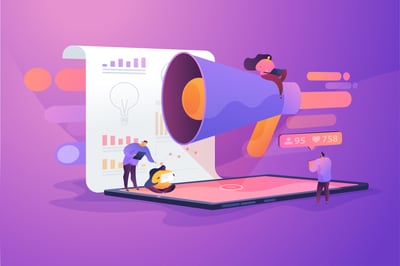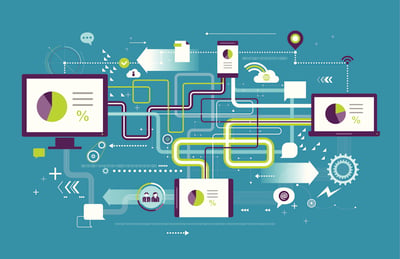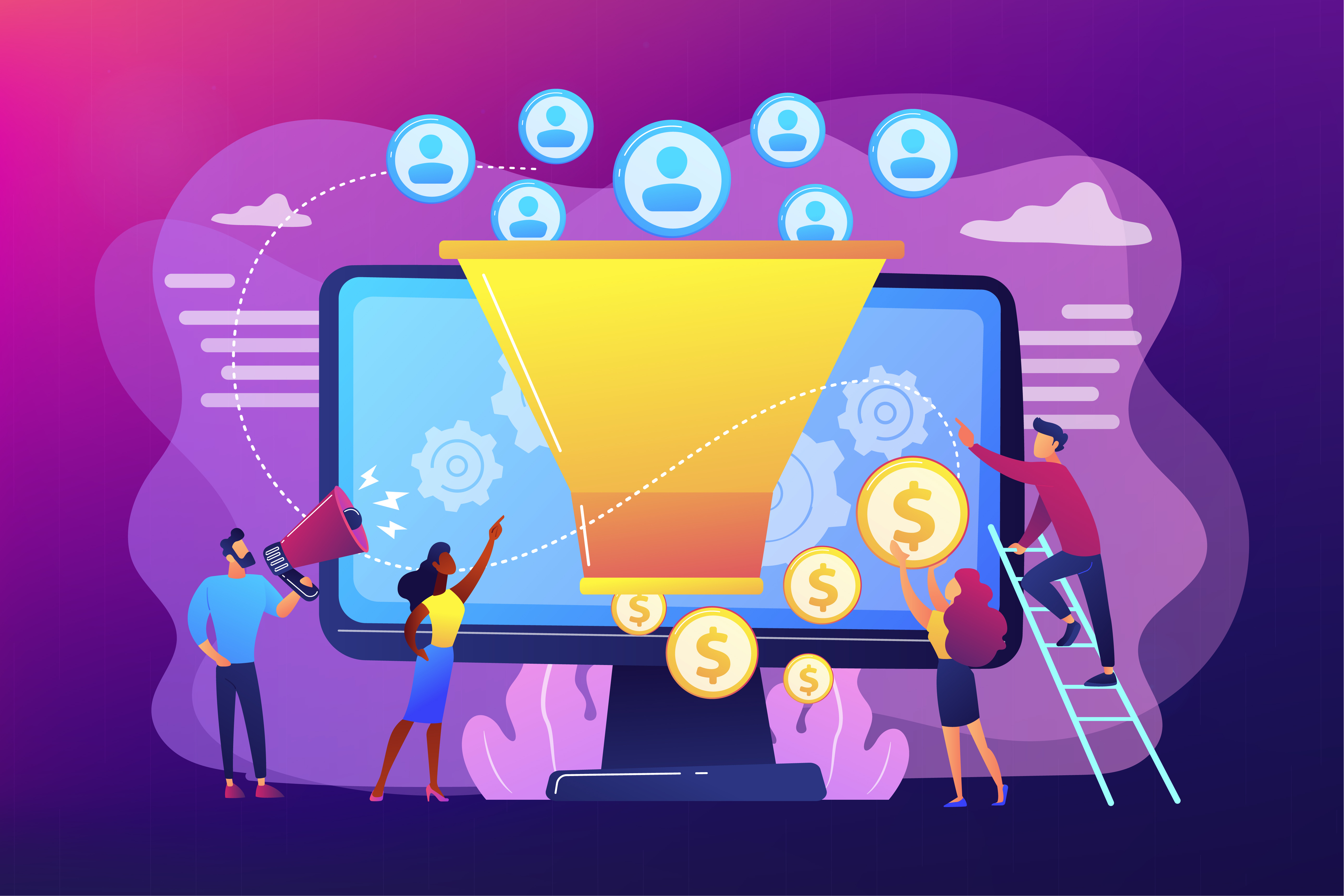
Even if you create the best products in the world, your e-commerce store will fail if you don’t have an effective marketing funnel in place.
A well-planned funnel will ensure that you get the best ROI from all the hard work you are putting into creating your products. So, to help you get it right the first time, here is a list of 17 conversion elements that your e-commerce marketing funnel should include.
In order to maximize conversions with your marketing funnel, you have to start by gaining some traffic. From there, you can achieve conversions, then follow up after. Let’s discuss the elements that apply to each step of this process.
Every funnel begins with traffic. If you drive more traffic, you will have more conversion opportunities. Here’s a list of the five best traffic sources for e-commerce stores.
There are cheaper e-commerce traffic-driving methods like content marketing, but they take a long time to bring in results. This is why to quickly generate sales, especially when you’ve just launched your e-commerce store, you should run ads.
You can start with Facebook ads as they are easy to set up and are also affordable. Pinterest ads are also great for e-commerce stores as the average order value is $154, which is more than double the average order value on Facebook. Also, fewer businesses use Pinterest ads so you should be able to buy ads for even cheaper here.

Another technique that can bring instant results is influencer marketing. It can actually work out much cheaper than ads as the average return on every dollar spent on influencer marketing is $6.50.
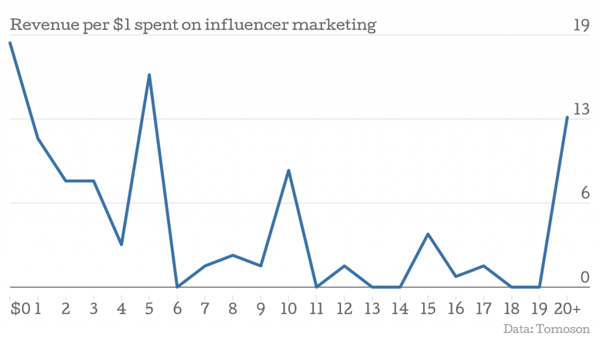
The best network for influencer marketing right now is Instagram as it drives the highest organic engagement. Finding influencers who want to help you sell products on Instagram should also be easy as it is a big business on the network.
A free method that can help drive traffic is social media sharing. You should be sharing the landing pages for your products and reaching out to influencers with thousands of followers in order to convince them to share the pages. This will get you some free traffic.
The above methods will get you instant traffic. But if you only use paid methods, running your e-commerce store will become very expensive. This is why you should invest in long term traffic-driving methods like SEO. Use a good keyword research tool to see which keywords related to your products are being searched.
Then optimize your landing pages for those keywords and build backlinks. If you follow this process and keep up with Google’s SEO trends, you will begin generating traffic from search engines in four to six months. It is a long process, but it will cost less than ads or influencer marketing.
Driving social media and search engine traffic to a product page can be hard work because many people will not want to share a page or link to it if it is too promotional. This is why you should create free helpful content in the form of blog posts, in which you can advertise relevant products. For best results write longer blog posts as they get more backlinks and shares.
How much of your traffic converts to leads and sales will depend on how well you optimize your website for conversions. So, here are the different elements that will help you convert more.
The landing page is a basic requirement of an e-commerce store. You are only going to sell products if you have well-optimized landing pages that convince visitors that it is worth investing in the products.
Create a good landing page that includes photos of the product, a description that mentions the benefits of using the product, social proof in the form of ratings, reviews, or other user-generated content, and a call to action button that is present above the fold.
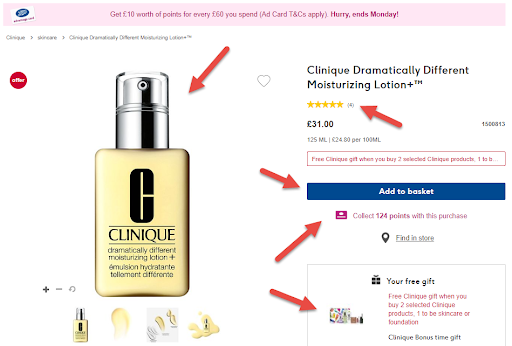
As you can see in this example, there are pictures of the product, a five-star review, and a call to action that is placed above the fold. You can see the description if you scroll down. They also include extra information like the number of points you collect by making the purchase and the free gift offer. These will convince more people to convert.
Offer bumps are small upsell offers (relevant to the product on the landing page) that are recommended to people who may be interested in making a purchase. They can increase revenue by encouraging customers to buy more.
Another way to optimize your website for conversions is by personalizing your messaging for different audiences. A good example of using personalization is creating different versions of landing pages according to the UTM parameters that you’re using in your PPC campaigns.
Let’s say you’re running ads on Facebook, trying to sell different types of clothes: dresses, jeans, and t-shirts. The clicks you get from each ad come from different types of audiences, based on the item they’re most interested in.
This is where the UTM parameters come into play. Use a UTM code builder to assign your UTM parameters properly to each ad. For example, an ad for a pair of jeans can have a parameter like utm_content=jeans.
The next step is creating an optimized version of your website according to the content you presented on your ad. Instead of creating several web pages that will have permanently different URLs, you can use a website builder that allows you to present different content based on UTM parameters in your campaign URL.
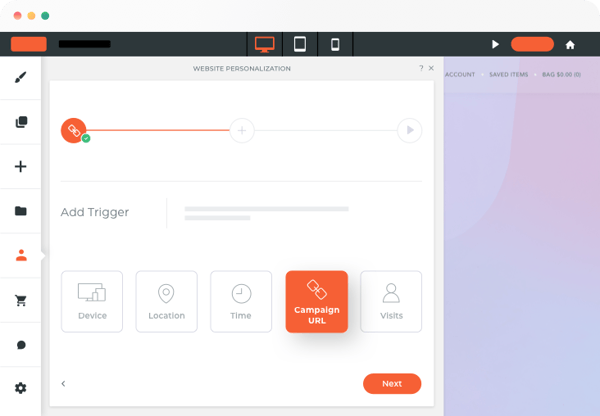
If you successfully utilize this e-commerce personalization method, you’ll gain a predicted 15% profit boost by 2020, so make sure you don’t miss out on this technique.
On the checkout page, people should be able to view the products in their cart and see a clear breakdown of how much each product costs, the shipping fees, delivery timings, etc. Most store owners ignore this part and create bad checkout pages that result in a lot of cart abandonment. The average cart abandonment rate is 75.6%, so make sure you give special attention to your checkout page.

The thank-you page is the page people are redirected to after they make a purchase. On this page, you should inform people that the purchase went through properly and without any hiccups. You should also let them know when the order will be shipped to them, and the order number. Also, ask them to check their inbox for an email with the receipt. You can even upsell some products on the thank you page as well.
The average e-commerce landing page conversion rate is less than 2%. That’s pretty low. It couldn’t hurt to add a chatbot to the landing page to try and make your conversion rate a little better. This will answer some of the questions visitors have. It can also be used to collect email addresses of visitors. If they don’t convert right away, you can nurture them via email and convince them to convert later.
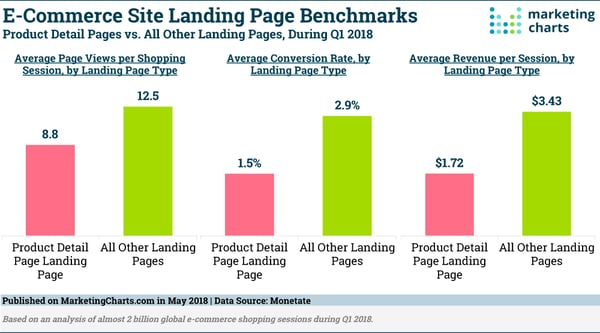
Another way to convert traffic to subscribers is to offer them a free lead magnet like a helpful ebook that is on a topic related to your product. This would actually be a better addition to your blog posts. Many of the visitors who aren’t ready to buy will sign up for these lead magnets. You can nurture them via email and promote products later.
Another type of opt-in you can use is a discount opt-in. Set an exit trigger popup to show up right when someone is exiting the page. This popup should ask people to subscribe to your email list to get a free discount code. Many people will sign up for the code, and some of them will make a purchase. If they don’t purchase anything, you can reach out to them via email.
It takes time to get the conversion part of the funnel right. You will probably lose some money at the beginning. This is why in order to make sure your funnel works, I recommend that you run an experiment before you officially launch your product.
Set up a quick funnel with an e-commerce platform builder and then use a dropshipping app to list and promote products similar to the ones you plan to manufacture and sell in your e-commerce store. Then use ads to drive traffic and measure the conversion rate of your funnel to make sure you are generating a profit.
If you generate a positive ROI, you can remove the dropshipped products and replace them with yours. If ROI is negative or low, you can modify the funnel and check if things get better. If the changes still don’t work, it might be better to abandon this product idea and try another product.
It’s best to do this ahead of time to get proof of concept before you even start manufacturing (in the idea phase). It will save a lot of time and money.
|
TIP: See all available e-commerce platforms software currently on the market. |
Every e-commerce store needs to have a follow-up plan in place. You should follow up with people who make a purchase to upsell your products, and you should follow up with people who haven’t made a purchase to convince them to make their first purchase.
As soon as someone makes a purchase, you need to email them a receipt. But don’t stop there, follow this up with a series of emails that upsell more relevant products from your store.
For people who abandoned their cart, you need to follow up with an email that promotes the same product they abandoned. Entice them with a discount code if possible. For people who signed up for a lead magnet, you need to send a nurturing sequence or drip campaign. This should share free content that helps them in some way—you can begin promoting products when the time is right.
Another important thing you shouldn’t forget to do is segment email subscribers based on their interests. Most email software these days let you add trigger links. When people click on them, they can be transferred to another list based on their interests. This can help you promote only the most relevant products to subscribers. This will increase the conversion rate and reduce the unsubscription rate.
Another way to upsell products and get the attention of people who abandoned their carts is by using retargeting ads. You can add pixels of the ad platform to the thank you page and the checkout page, then set relevant ads based on the user’s actions.
A tripwire is a cheap offer you present to people to convert them to buyers. They are best used at the end of the funnel. Present a cheap product to all the people who don’t convert at the end of the funnel. The people who convert to the tripwire can then be segmented as buyers to whom you can promote other relevant products.
These are the 17 conversion elements every e-commerce marketing funnel should have. Make sure you add them to all the funnels you create now and onwards. Together, they will ensure you generate the highest sales from the effort you put in.
Explore the best eCommerce platforms with a detailed breakdown of pros and cons to find the right fit for your business
Mitt Ray is the founder of Social Marketing Writing where you can download Free Social Media Visual Templates.
Whether you're selling fashion accessories, upscale electronics, or consumer packaged goods,...
 by Leigh-Anne Truitt
by Leigh-Anne Truitt
Designing real estate landing pages is your secret weapon to increase your conversions like a...
 by Marilia Dimitriou
by Marilia Dimitriou
Digital marketing is an essential part of brand promotion.
 by Adelina Karpenkova
by Adelina Karpenkova
Whether you're selling fashion accessories, upscale electronics, or consumer packaged goods,...
 by Leigh-Anne Truitt
by Leigh-Anne Truitt
Designing real estate landing pages is your secret weapon to increase your conversions like a...
 by Marilia Dimitriou
by Marilia Dimitriou
